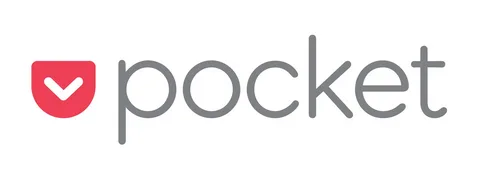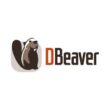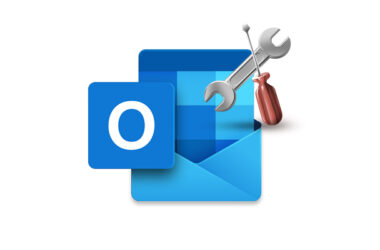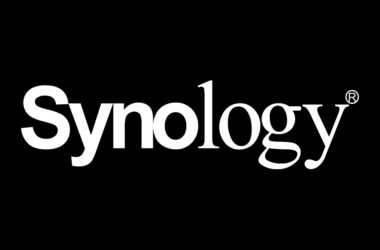In the fast-paced digital era, pockets have become an integral part of our online experience. These nifty tools allow users to save and organize content for later consumption, offering a convenient way to curate a personalized collection of articles, videos, and more. As we delve into the world of pockets, we’ll explore their features, acknowledge their limitations, and uncover what sets them apart. But why the need for a pocket alternative, you ask? Let’s unravel the reasons behind the quest for something different.
Features And Limitations Of Pocket

Navigating the dynamic landscape of digital content organization, it becomes imperative to delve into the intricate nuances of both the features and limitations inherent in Pocket. Unveiling the strengths that set it apart, while also acknowledging potential areas for improvement, allows users to make informed decisions and explore alternative solutions that may align more closely with their unique preferences and requirements.
Features of Pocket Alternatives:
- Enhanced Organization: Unlike Pocket, many alternatives offer advanced organizational features, allowing users to categorize and manage their saved content with greater flexibility.
- Collaborative Features: Some alternatives provide collaborative tools, enabling users to share and collaborate on saved content with team members or friends, fostering a sense of collective curation.
- Advanced Search Functionality: Unlike Pocket’s limited search capabilities, certain alternatives come equipped with robust search functionalities, making it easier for users to locate specific content within their collections.
- Visual Bookmarking: While Pocket primarily focuses on textual content, some alternatives specialize in visual bookmarking, offering a visually-driven experience for users who prefer image-centric content organization.
- Integrated Note-Taking: Many pocket alternatives go beyond basic content saving and incorporate comprehensive note-taking features, allowing users to jot down thoughts, annotations, and insights alongside their saved items.
Limitations of Pocket Alternatives:
- Learning Curve: Some alternatives, with their advanced features, may have a steeper learning curve for new users compared to the user-friendly nature of Pocket.
- Platform Compatibility Issues: While Pocket seamlessly integrates across platforms, certain alternatives may face challenges in providing a consistent experience across different devices and operating systems.
- Limited Integration with Apps: Unlike Pocket, which integrates seamlessly with various apps, some alternatives may have limitations in terms of app integrations, restricting the sources from which users can save content.
- Subscription Costs: Just like Pocket’s premium features come at a price, some alternatives may also have subscription costs associated with accessing advanced functionalities, potentially impacting budget-conscious users.
- Varied Privacy Measures: While some pocket alternatives prioritize privacy and offer robust security measures, others may lack comprehensive privacy features, posing concerns for users who prioritize data security.
What Sets Pocket Apart: Unraveling the Uniqueness
Seamless Integration with Apps: Pocket integrates effortlessly with various apps, allowing users to save content from different sources, creating a unified digital library.
Recommendation Engine: Pocket’s recommendation engine suggests content based on your preferences, adding a touch of personalization to your curated collection.
User-Friendly Interface: Despite its text-heavy nature, Pocket boasts a user-friendly interface, making it accessible to both tech novices and enthusiasts alike.
The Quest for a Pocket Alternative

Embarking on the journey to find the ideal Pocket alternative involves a meticulous exploration of diverse options, decoding their unique offerings, navigating real-world user experiences, and aligning individual priorities to unearth a digital content curation tool that perfectly suits one’s needs.
1. Diverse Landscape of Alternatives: Navigating the Digital Terrain
the digital content curation arena is a vast landscape teeming with alternatives to Pocket, each presenting a unique blend of features and functionalities. From minimalist interfaces that prioritize distraction-free reading experiences to robust tools that cater to collaborative content curation, users find themselves immersed in a tapestry of options. The exploration involves not just identifying alternatives but understanding the essence that makes each one distinct, providing users with a plethora of choices tailored to their content consumption habits.
2. Unique Selling Propositions: Decoding What Sets Alternatives Apart
Decoding the unique selling propositions of Pocket alternatives is akin to unraveling a digital treasure trove. Each alternative showcases its own set of strengths, be it the emphasis on visual bookmarking, seamless integration with external apps, or sophisticated recommendation engines. Users engage in a comparative analysis, weighing the distinctive features against their preferences and content curation needs. The quest becomes an intricate process of understanding the nuances that make each alternative a compelling contender in the realm of digital content organization.
3. User Reviews and Experiences: Navigating the Real World Insights
Stepping into the real-world experiences of users provides an invaluable compass in the quest for a Pocket alternative. Reviews and anecdotes shared by fellow users offer practical insights into usability, reliability, and unexpected nuances. By navigating these narratives, users gain a deeper understanding of how alternatives perform in everyday scenarios, making informed decisions grounded in the collective wisdom of those who have traversed the same exploration path.
4. Considerations Beyond Pocket’s Limitations: Mapping Individual Priorities
The exploration journey extends beyond acknowledging the limitations of Pocket; it involves mapping out individual priorities. Users reflect on their specific needs and desires in a content curation tool. Whether it’s advanced organizational capabilities, collaborative tools for team endeavors, or the budget-conscious consideration of subscription costs, the quest becomes a personalized endeavor. Mapping these priorities ensures that the chosen Pocket alternative not only addresses limitations but also enhances the overall content curation experience, aligning seamlessly with the user’s unique requirements.
Commonly Used Pocket Alternatives: A Comprehensive Comparison

Diving into the realm of commonly used Pocket alternatives unveils a comprehensive comparison, where each contender takes center stage, showcasing its unique strengths and functionalities. Let’s explore these alternatives in greater detail, understanding what sets them apart and how they cater to diverse user preferences and content curation needs.
1. Instapaper: Streamlined Reading Nirvana
Instapaper emerges as a stalwart in the realm of pocket alternatives, offering a seamless and distraction-free reading experience. Its clutter-free interface ensures that users can delve into saved articles without any unnecessary distractions. Instapaper’s strength lies in its focus on textual content, making it an ideal choice for those who prioritize the written word. With an emphasis on simplicity, it stands as a testament to how a minimalist approach can enhance the reading journey.
2. Readwise: Transforming Highlights into Knowledge
Readwise takes a unique approach by turning highlights and notes into a valuable knowledge resource. With integrations with popular reading apps, this alternative synchronizes annotations, making it a powerful tool for avid readers. It transforms the act of reading into a dynamic learning experience, fostering a deeper connection with the content by curating and organizing insights.
3. Raindrop.io: Versatility in Bookmarking Bliss
Raindrop.io steps beyond textual confines, excelling in bookmarking and organizing links, images, and videos. Its visually appealing interface transforms the act of saving content into an aesthetic experience. Users can curate a digital collection that goes beyond mere text, adding a visual flair to their content curation journey.
4. Pocket Casts: Podcast Organization Perfected
For enthusiasts of the spoken word, Pocket Casts stands out as a go-to choice. Tailored for those passionate about podcasts, it goes beyond saving and organizing, offering features like automatic downloads and personalized episode recommendations. Its intuitive interface caters specifically to the needs of podcast aficionados, providing a comprehensive solution for managing audio content.
5. Evernote: Beyond Saving to Comprehensive Note-Taking
Evernote extends beyond basic content saving, positioning itself as a comprehensive note-taking app. Its robust organizational features make it a versatile choice for users looking to manage diverse types of digital content. The integration of note-taking capabilities elevates it to a space where content curation seamlessly transitions into a broader realm of knowledge management.
6. Flipboard: Curated Content Experience Redefined
Blending the roles of a news aggregator and content-saving tool, Flipboard presents a curated content experience. Its magazine-style layout not only organizes saved articles but also adds a visual dimension to content discovery. Users can enjoy a personalized magazine tailored to their interests, making the act of saving content an aesthetically pleasing journey.
7. Diigo: Collaborative Annotation for Teams
Diigo distinguishes itself by going beyond basic content saving and offering collaborative features designed for teams. Users can highlight, annotate, and share web pages, making it an ideal choice for collaborative research and group projects. Its collaborative tools transform content curation into a collective endeavor, fostering collaboration and knowledge sharing.
8. Wallabag: Privacy-Focused Control Over Content
Wallabag caters to users prioritizing privacy and control over their saved content. As an open-source and privacy-focused alternative, Wallabag allows users to self-host, placing data ownership firmly in their hands. This alternative offers a sense of autonomy and security for those who value privacy in their digital content curation.
9. Mix: Socially-Infused Content Discovery
Formerly known as StumbleUpon, Mix introduces a social element to content curation. Users can discover and save content based on their interests, leveraging a community-driven approach. Mix goes beyond individual preferences, providing users with a platform to share discoveries and engage in a collaborative exploration of content.
10. Pinboard
Pinboard is a social bookmarking website that allows users to save and organize bookmarks for websites, articles, and other online content. Launched in 2009, Pinboard focuses on simplicity and efficiency, offering a straightforward platform for users to curate and manage their digital bookmarks. It distinguishes itself with features like tag-based organization, a clutter-free interface, and the ability to archive copies of saved web pages. Additionally, Pinboard incorporates social elements, enabling users to discover and explore bookmarks shared by others in the Pinboard community. Known for its reliability and no-nonsense approach, Pinboard appeals to users seeking a streamlined and functional bookmarking experience.
Factors To Consider While Choosing The Perfect Pocket Alternative

Navigating the intricate landscape of Pocket alternatives demands a thoughtful analysis of key considerations. As we explore the Factors To Consider While Choosing The Perfect Pocket Alternative, each facet becomes a compass, guiding users toward a tailored selection that harmonizes with their preferences, budget, and digital content curation needs.
1. User Interface and Experience
The user interface serves as the gateway to a seamless content curation experience. Opting for a Pocket alternative with an intuitive and visually appealing interface can significantly enhance user satisfaction. A clean, user-friendly design not only streamlines the process of saving and organizing content but also contributes to an overall enjoyable interaction. When evaluating alternatives, consider the interface’s aesthetics, ease of navigation, and how well it aligns with your personal preferences for an optimal user experience.
2. Cross-Platform Compatibility
In a world where digital interactions span various devices and platforms, the importance of cross-platform compatibility cannot be overstated. The ideal Pocket alternative seamlessly integrates across desktops, laptops, tablets, and smartphones, ensuring that your curated content is accessible whenever and wherever you need it. Checking the compatibility and synchronization capabilities across different operating systems ensures a consistent and hassle-free experience, irrespective of the device you use.
3. Pricing Structure
While exploring Pocket alternatives, understanding the pricing structure is pivotal in making an informed decision. Evaluate the features offered in both free and premium versions, considering whether the subscription cost aligns with your budgetary constraints. Some alternatives offer a balance between free and premium features, ensuring that users have the flexibility to access enhanced functionalities without breaking the bank. A careful examination of the pricing model ensures that the chosen alternative not only meets your content curation needs but also fits comfortably within your financial parameters.
4. Specialized Features
Different users have diverse content curation requirements, and the perfect Pocket alternative should cater to those specific needs. Consider the specialized features offered by each alternative—whether it’s robust podcast organization, collaborative annotation tools, or visual bookmarking capabilities. Identifying the features that matter most to you ensures that the chosen alternative aligns with your unique preferences, enhancing the overall content curation experience.
5. Privacy and Security
In an era where data privacy is a growing concern, the level of privacy and security measures implemented by a Pocket alternative is a crucial consideration. Evaluate the privacy policies, encryption methods, and any self-hosting options available. For users prioritizing data security, opting for an alternative with robust privacy features ensures that your curated content remains protected and your digital footprint stays confidential.
Conclusion
In the vast landscape of digital content organization, exploring pocket alternatives opens up a world of possibilities. While Pocket stands as a reliable option, the diversity of alternatives ensures that users can find a solution tailored to their unique preferences. As the quest for the perfect pocket alternative continues, weighing features, limitations, and user requirements will lead to a choice that enhances the digital content curation experience.









